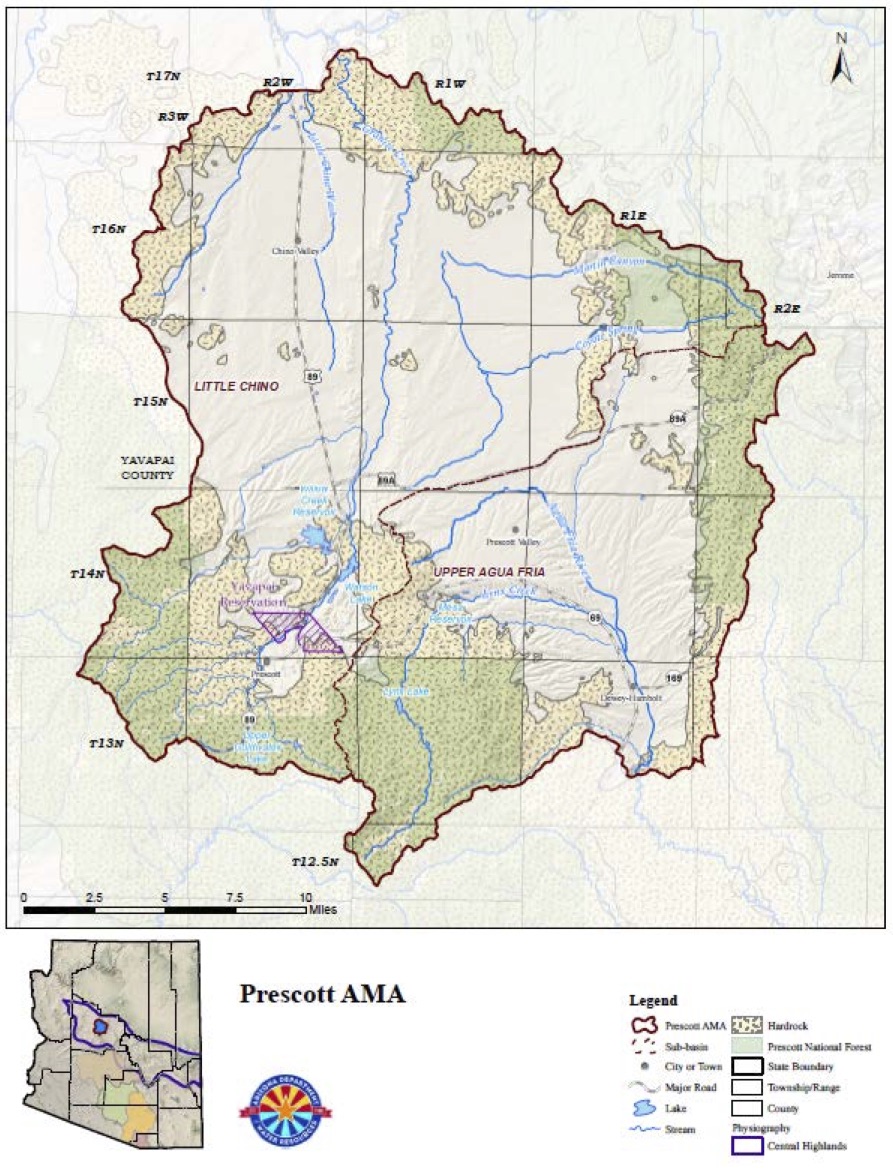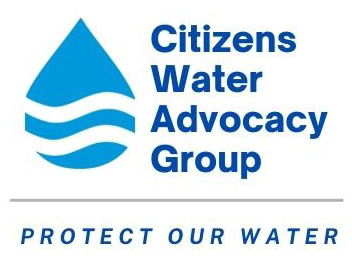Safe yield is the management goal of the PrAMA. It is a flawed concept that does not protect our springs and rivers - an inadequate solution.
- When safe yield is achieved, water levels and the amount of groundwater stored in our aquifer will continue to decline!
- Safe yield will not restore aquifers to their previous condition. The aquifer will remain in a depleted condition, which is deemed acceptable by Arizona water law.
- Surprisingly, achieving safe yield will not protect the Verde River – it will dry up.
For an aquifer in natural condition (predevelopment) at equilibrium, the natural recharge into the aquifer equals the natural discharge. In this case, the flow of the Agua Fria and Verde rivers (discharge) would equal the natural recharge. Safe yield is a balance between total withdrawals and total recharge of water to the aquifer. By pumping groundwater in an amount equal to the natural recharge (safe yield), there is no remaining water for the river, and flow will eventually cease. Safe yield fails to protect environmental water that is critical to our wildlife resources and our quality of life.
CWAG supports a modified version of safe yield: “Safe Yield With River Flow.”
-
Legal Definition
Legal Definition
Safe yield is a groundwater management goal representinga long-term balance between the amount of groundwater withdrawn and recharged. Arizona water law directs the Arizona Department of Water Resources (ADWR) to manage the Prescott Active Management Area (PrAMA) to achieve the goal of safe yield by 2025.
 Arizona water law defines safe yield as a goal and not as a requirement. There are no penalties for water suppliers or users for not meeting safe yield. Under the law, ADWR has no obligation to develop or require the communities to develop a plan to reach safe yield. As such, the residents of the PrAMA must voluntarily reach safe yield or suffer the eventual physical penalties and economic hardships of a depleting aquifer.
Arizona water law defines safe yield as a goal and not as a requirement. There are no penalties for water suppliers or users for not meeting safe yield. Under the law, ADWR has no obligation to develop or require the communities to develop a plan to reach safe yield. As such, the residents of the PrAMA must voluntarily reach safe yield or suffer the eventual physical penalties and economic hardships of a depleting aquifer.At this time, our region does not even plan to discuss how to develop a plan to reach safe yield. In fact, the county and municipalities refuse to acknowledge that the ongoing overdrafts represent a problem.
The PrAMA is currently out of safe yield. From 1985 - 2010 groundwater pumping exceeded recharge by 18%.
Updated December 13, 2020 -
Safe Yield Fails To Protect Wells & Rivers
Safe Yield Fails To Protect Wells & Rivers
The withdrawal of groundwater by wells causes water levels in an aquifer to fall. The inherent concept in safe yield assumes that if we pump groundwater at a rate equal to the rate of recharge, groundwater levels will not decline and pumping can continue. This is not correct for the PrAMA, where water levels will continue to decline for some time after safe yield is reached because of ongoing natural discharge from the aquifer into rivers and springs.
Prior to development by mankind (no pumping), the water level in an aquifer did not change over the long term because natural recharge and natural discharge were equal. Today's pumping, even if at safe yield rates, does not stop the decline of water levels in the aquifer because natural discharge continues. As a result aquifer water levels will continue to decline. Even if groundwater pumping is held to safe yield, natural discharge from the PrAMA will eventually cease and the base flow of the upper Verde River will be degraded.
-
Conceptual Flaws in Safe Yield
Conceptual Flaws in Safe Yield
In 1980, the 1980 Arizona Groundwater Management Act was recognized as a progressive attempt at groundwater management. The act proposed a measured transition to renewable water sources, reserving stored groundwater for emergency use. In that context, safe yield was an early, laudable effort to achieve sustainable water use. However, four decades of experience and research taught us that Safe Yield is a deeply flawed management goal because:
- Safe yield does not consider community values such as the need to protect rivers and springs.
- Safe yield is defined within a political boundary; water resources are more properly managed within a watershed.
- A sustainable management rule would consider the total impacts over the larger watershed.
- Safe yield is inconsistent with modern hydrology because it only involves groundwater. Science is clear that groundwater and surface water are linked components within a unified hydrologic cycle.
- Safe yield does not protect natural surface water - rivers and springs.
- The safe yield management goal is not clearly defined. The natural discharge component of the safe yield calculation could be measured either at predevelopment or at nearly dry conditions.
- Because safe yield is defined for the Active Management Area (AMA) as a whole, it permits some areas within the AMA to suffer groundwater level declines while other areas use the water, thus benefits and costs are not distributed equitably within the AMA.
- ADWR anticipates that importing water from the Big Chino Valley will help achieve safe yield in the Little Chino aquifer. This is impossible because the legally authorized volume of water is far less than the volume needed for safe yield, and because Prescott Valley and Prescott intend to use the Big Chino water to supply new homes, not for achieving safe yield. Also, transferring water from the Big Chino will damage that aquifer, which supplies the base flow of the Verde River.
Because of these flaws, safe yield is not a science-based goal and achieving safe yield will not assure a sustainable water future. However, safe yield is the law we must work with today.
Updated Dec 13, 2020
